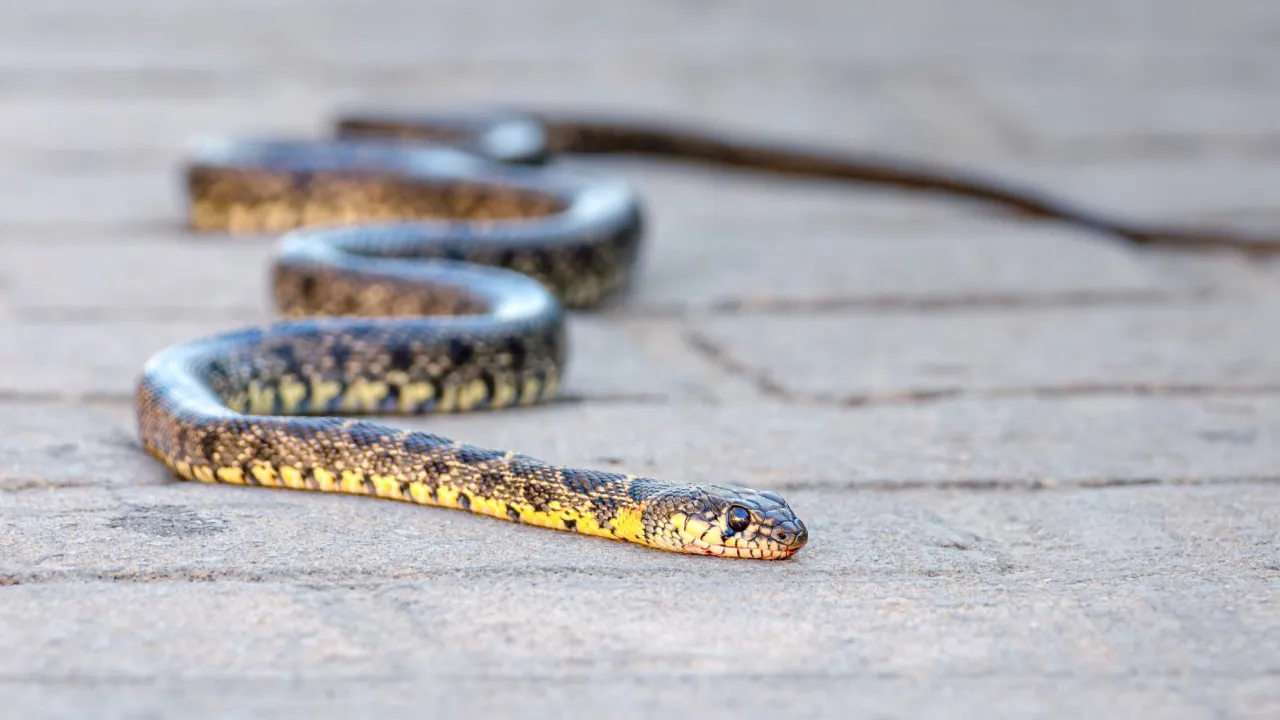
In recent months, urban snake rescues have been widely reported by entities such as fire brigades, with incidents occurring in public spaces like a municipal swimming pool, a shopping center, and even a vending machine by CP – Comboios de Portugal. Notícias ao Minuto spoke with the Institute for Nature and Forest Conservation (ICNF) to delve into the issue.
The ICNF clarified that “reptiles have always existed in urban environments, as there is a continuous flow of species between peri-urban areas, which are more or less naturalized, and urban areas.”
Additionally, they stated that “the naturalization of urban areas, mainly through the promotion of green spaces, encourages this flow, which is not limited to reptiles but includes species from various groups.”
Regarding snakes, “there may be climatic situations more or less favorable to their reproduction, which could create the illusion of an increased number of animals.”
“These phenomena are cyclical, influenced by climatic conditions, as these animals cannot regulate their body temperature and are affected by ambient temperature,” the ICNF told Notícias ao Minuto.
What are the most common species that can be found outside their natural habitat? Are any of them venomous?
The most common species outside their natural habitat include the ladder snake, the horseshoe whip snake, and the Montpellier snake, which are also “the most common species in nature.”
Among these, the Montpellier snake is venomous, but since its venomous teeth (fangs) are located at the back of the jaw, it uses its regular teeth when biting, injecting venom only when swallowing prey, making it not dangerous to humans as bites involve only the front teeth.
According to the ICNF, “the vast majority of bites” result from a “defensive reaction by the animals” when people interact with them. “In general, reptiles, particularly snakes, are shy animals and avoid human contact, opting for escape whenever possible,” they explained.
Thus, upon seeing a reptile in urban areas, “one should not interact with the animal but let it go its way and avoid stepping on, grabbing, or cornering it.”
“If none of these attempts are made, there will undoubtedly be no problem,” assured the institute.
What measures can be implemented to prevent snakes from entering urban areas?
“Naturalized urban areas should contain the elements of those ecosystems, whether they be invertebrates, amphibians, reptiles, birds, or mammals,” stated the ICNF, explaining that “it is not desirable for these areas to be completely sealed off from natural elements, and snakes also play a role in these naturalized urban ecosystems by feeding on various types of prey,” such as insects, amphibians, reptiles, and small rodents.
Moreover, snakes “also serve as food for birds, reptiles, and mammals.”
In this regard, it is “essential to raise public awareness to learn to share these spaces, understanding the role of each of its elements, and ours.”




